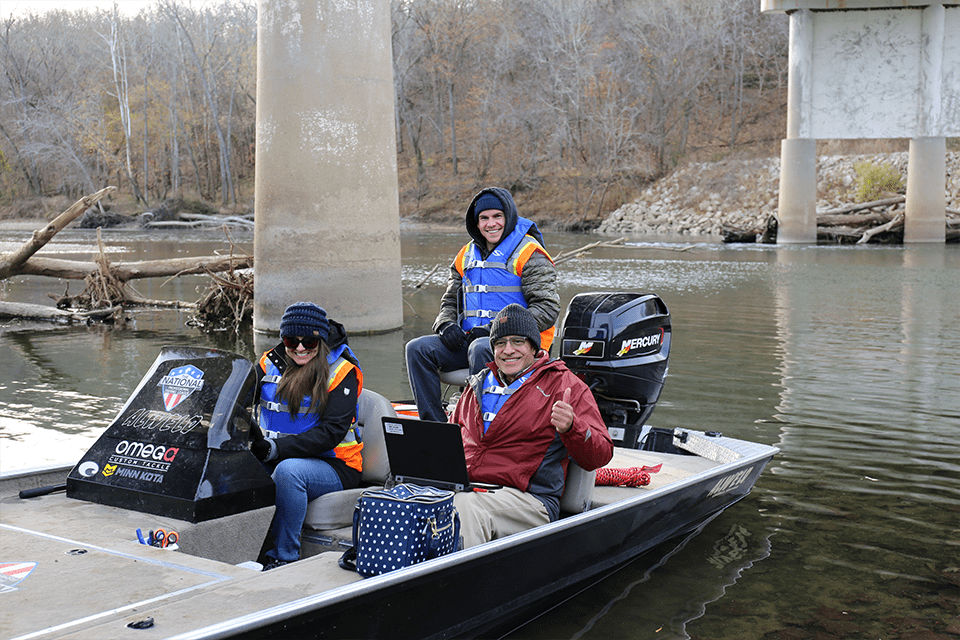Saint Louis University’s WATER Institute Collaborates with Missouri Department of Transportation to Evaluate Bridge Scour Using Advanced Hydraulic Modeling Methods
Saint Louis University’s WATER Institute collaborated with the Missouri Department of Transportation to model bridge scour during major weather events, such as flooding, using advanced two-dimensional modeling techniques in an effort to proactively maintain bridge safety throughout the state.
SLU’s Amanda Cox, Ph.D., associate professor of civil engineering and director of SLU’s WATER Institute, and Ronaldo Luna, Ph.D., professor of civil engineering, led the project. The pair identified five “high-priority” bridges that represent the many types found throughout Missouri to examine how much scour occurs during major weather events – 100-year and 500-year flooding – and how these types of weather events could impact the bridges’ future stability.
“The number one cause of bridge collapse is bridge scour,” Cox said. “And there is uncertainty associated with the factors that influence bridge scour: how much water, how fast the water will move, the strength of the material below the water, how it erodes, etc. It’s so important that we are able to assess and account for these uncertainties. The 2-D model helps us accomplish that.”
Two-dimensional modeling examines how currents move both downstream but also cross-stream, which previously was unable to be computed using 1-D modeling methods. By modeling both downstream and cross-stream currents, researchers were able to determine the amount of bridge scour, or erosion, caused by these major weather events. The results provided vastly more data points than previous models, and for some bridge sites the analysis showed significantly more bridge scour than previously determined from 1-D modeling methods..
“It’s clear that with this model, you’re going to get results which are more accurate due to the more sophisticated tools and data,” Cox said. “We’re using better tools, which, in turn, provides The Missouri Department of Transportation with better data, which leads to safer bridges. The Missouri Department of Transportation initially had a call for research proposals to be proactive about its bridges, and with our modeling, we’re allowing them to properly plan for any significant weather events that may occur in the future.”
The five bridges were chosen by the researchers because they offered variety in terms of water size, flow patterns, sediment levels and other factors, allowing the models to examine how those different factors can affect the amount of scour produced by major weather events.
Along with testing results, SLU’s WATER Institute provided the Missouri Department of Transportation with recommendations on what to do next. At the top of that list: reevaluating potential scour at other high-risk or visually vulnerable bridges using the more advanced tools. The new modeling approach is also being used when constructing new bridges, ensuring bridge scour is properly planned for in the future.
“It’s clear that advanced modeling and technology have a significant impact,” Cox said. “The design process for new bridges requires you to evaluate scour when you're designing the bridge. By using these newer technologies and newer models for new bridge sites and evaluating current ones as well, we can better protect these bridges and help us ensure that Missouri bridges remain safe for travel.”


















